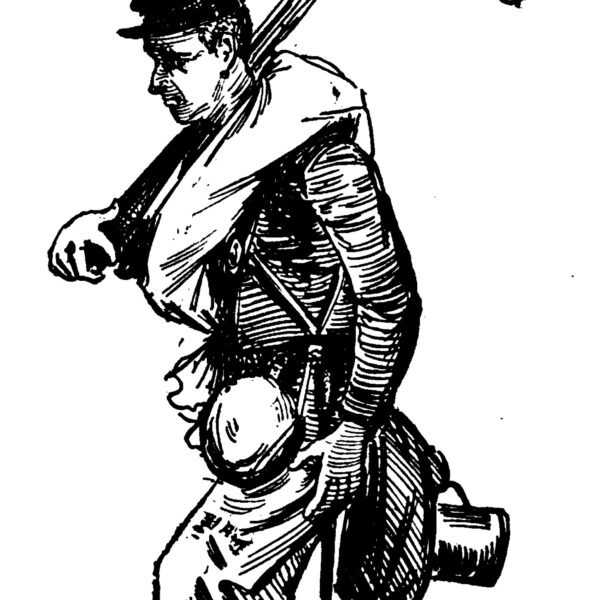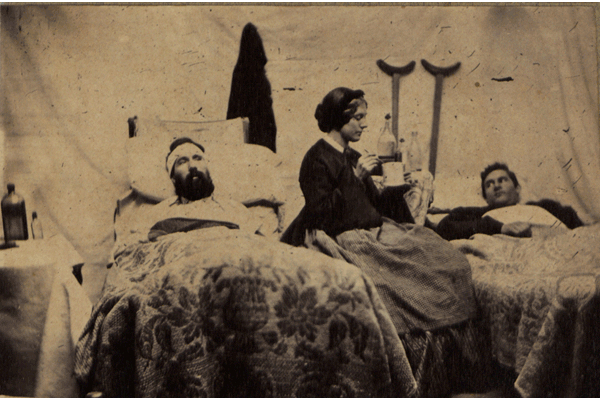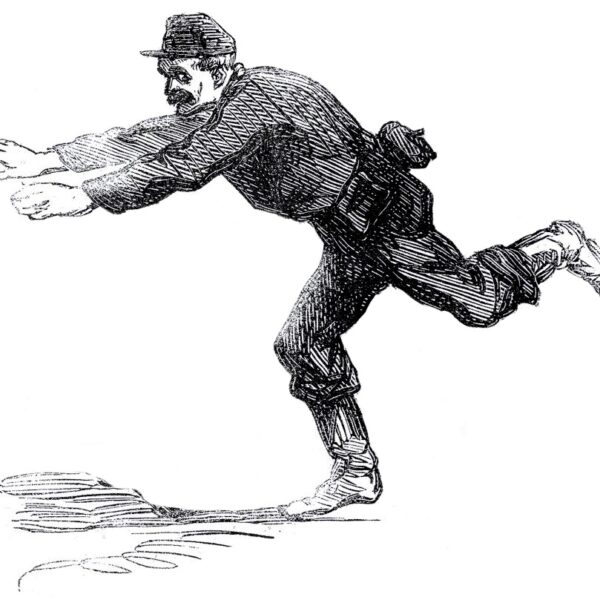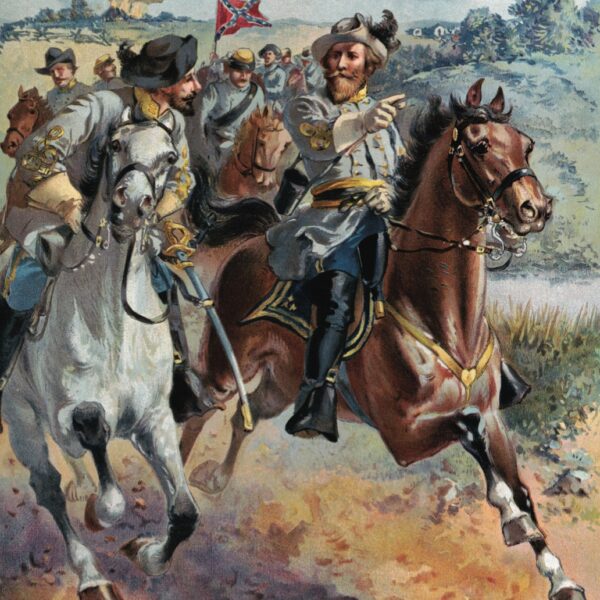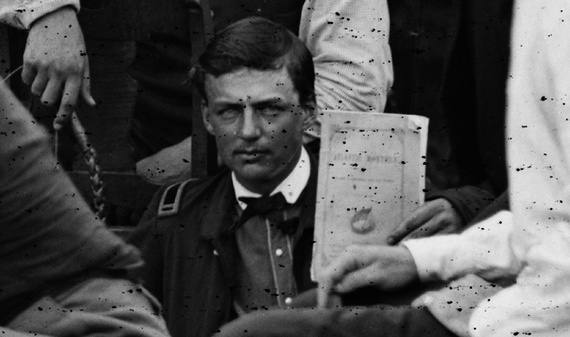
A Civil War soldier and his reading material
Civil War enthusiasts understand that historians construct campaign and battle narratives from official reports, maps, letters, journals, newspaper articles and the like. When reading an account penned by any popular author, there is an additional depth to be considered: not just the sources, but the preferences and interests of the historian. At conferences (and sometimes in bars) when historians gather, they often talk about influences on their work, but their readers rarely share in such conversations. Sometimes these influences can be found by combing through the footnotes of their books, but not always. Besides, most people want to read books, not footnotes.
What would happen if we asked Civil War historians to explain the five books that had the greatest influence on their early careers?
I can put a date to reading of one of my major influences: August 17, 1977. That was the day I came home from a road trip to Antietam, and also, incidentally, the day that Elvis Presley died. Motivated by having stared up the forbidding terrain opposite Burnside’s Bridge, I picked up Clifford Dowdey’s Lee’s Last Campaign(1960), which chronicled the Army of Northern Virginia from the Wilderness through the mid-June assaults on Petersburg.
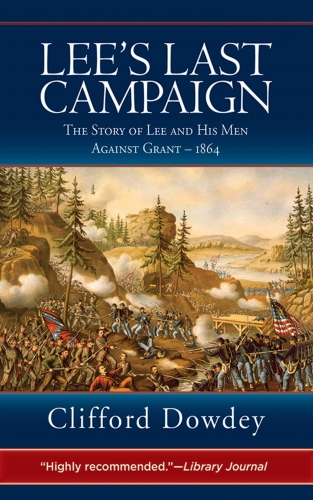
Dowdey was a disciple of Douglas Southall Freeman (both as historian and newspaperman) who never achieved his idol’s reputation. He was less judicious than Freeman (his character sketches sometimes bordered on caricature) and not a devotee of research minutiae (he intentionally avoided ever footnoting anything). Today, his works are mostly relegated to the discount bin, or occasionally appear on lists of “old classics” that nobody ever finds time to read.
Yet the man could write. His battle scenes brought you into smoke, fire, and chaos, and managed the difficult narrative trick of simultaneously keeping the reader informed while explaining why officers on the field never had any real idea what was happening. Before reading Dowdey, my interest in the Civil War had not extended into battle narratives because too many of them seemed convoluted, dry, and passionless. Dowdey led me to Edward Coddington, Bruce Catton, Stephen Sears, Robert Tanner, and a much larger company of craftsmen in the art of bringing war to life. Ironically, in writing my own Joseph E. Johnston and the Defense of Richmond(1998) I had the paradoxical aims of rebutting Dowdey’s interpretation of General Johnston while trying to live up to his narrative standard.
Two years earlier I had stumbled upon Archer Jones’ Confederate Strategy from Shiloh to Vicksburg(published in 1961). Before reading Jones, my interest in Civil War battles had been Virginia-based, and my knowledge of the Western campaigns came primarily from war games and “Old Unreliable” (1959’s The West Point Atlas of American Wars—chiefly known for its erroneous, albeit clear and well-organized, maps). Jones introduced me to the dynamic push-and-pull in the Confederate high command between the Virginia-oriented Lee and that cluster of officers that he and Thomas Connelly eventually labeled “the western concentration bloc.” More importantly, the final chapter (“The Gettysburg Decision”) suggested an entirely new idea: choosing to invade Pennsylvania instead of reinforcing Vicksburg might have been a greater strategic disaster for the Confederacy than Pickett’s Charge.
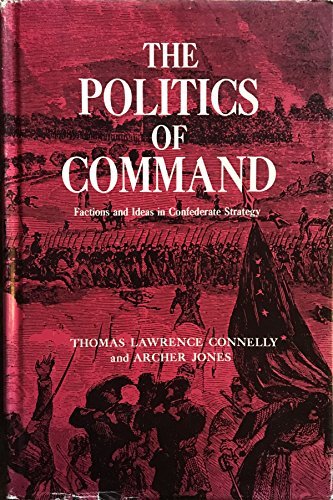
These were heady ideas, and opened me up to a rich vein of Civil War scholarship about which I had previously been ignorant. Confederate Strategy led me to the Jones-Connelly collaboration, The Politics of Command(1973), followed by Connelly’s own The Marble Man(1977) and his two-volume history of the Army of Tennessee. (Connelly’s Autumn of Gloryremains one of my personal favorite pieces of Civil War literature.) In the early 1980s, Jones teamed with Hermann Hattaway to write the revisionist How the North Won, which audaciously argued that historians like T. Harry Williams had been “wrong for the right reasons.” Modern followers in that revisionist tradition include Grady McWhiney, William Garrett Piston, and Richard McMurry.
Again, some caveats: Much of Archer Jones’ earlier work has been eclipsed by later research, and—as my dissertation advisor (Ludwell H. Johnson, author of The Red River Campaign) never tired of reminding me—many of Thomas Connelly’s citations leave a great deal to be desired. That’s the promise and the peril of revisionism: When you set out to challenge accepted wisdom, you will see things differently and everybody will be gunning for you. I discovered that myself when I wrote Lost for the Cause: The Confederate Army in 1864(2000), arguing that there had been tens of thousands more Rebels in the fight during the war’s last year than has been generally accepted.
I found a slim volume by Rollin G. Osterweis entitled The Myth of the Lost Cause, 1865–1900(1973) in my junior year at college. This was the first historiographical book I had ever read (at least voluntarily), and it fascinated me. Osterweis tracked the development of “Lost Cause” mythology through postwar literature, and built a strong foundation for what would later be called “history and memory studies.” In particular I was captivated by the chapter in which Osterweis went through the famous Battles & Leaderscollection, article by article, to show the development of completely different, competing, northern and southern interpretations of what the war meant.
Most modern Civil War enthusiasts have never even heard of Osterweis, but his work clearly influenced historians like David Blight, Gary Gallagher, Lesley Gordon, and Sarah Ann Rubin in their respective arguments that how we remember the war (often mistaking mythology for history) is as important in many ways as what actually happened.
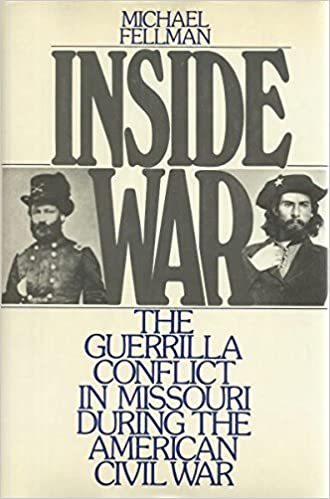
Michael Fellman’s Inside War: The Guerrilla Conflict in Missouri During the America Civil Warcame along much later (1989), but it is difficult to understate the book’s impact on my thinking about the war. Fellman challenged my suppositions about the importance of the guerilla war, and also introduced me to the value of non-narrative history. Inside War borrows from sociology and anthropology, examining at similar categories of situations rather than adhering to strict chronological order. Initially, I found this approach frustrating, yet later I appreciated the power of this analysis, especially after reading Stephen Ash’s When the Yankees Came(1995), Ervin Jordan’s Black Confederates and Afro-Yankees and Civil War Virginia(1995), or John Inscoe and Gordon McKinney’s The Heart of Confederate Appalachia(2000).
Finally, there is Albert A. Nofi’s article in Strategy & Tactics (vol. 43, 1974), “The American Civil War.” In about 15 pages, Nofi accomplishes the near-impossible: boiling down the entire war into a piece to be read in a single sitting. Nofi’s writing is engaging rather than encyclopedic (Burnside, he notes, had the courage to organize an attack, but “lacked the brains to plan one”). The article covers not just military campaigns, but also diplomacy, tactics, and the naval war; despite being a bit dated, it is still the basic introductory work I use with my undergraduates. Nofi proves that you do not have to be verbose to be informative—a lesson more writers need to take to heart.
Those are my influences: a battle/campaign piece by Dowdey, western strategy by Jones, historiography by Osterweis, social history by Fellman, and Nofi’s ultimate condensation of the whole war. Intriguingly, I discover no biography, no regimental history, and no soldier memoirs on the list, which I find revealing about my own preferences writing Civil War history.
Makes you wonder what your favorite historian was reading way back when, doesn’t it?
Steven H. Newton is Professor of History and Political Science at Delaware State University.
This article originally appeared in the Fall 2011 issue (Vol. 1, No. 1) of The Civil War Monitor.

